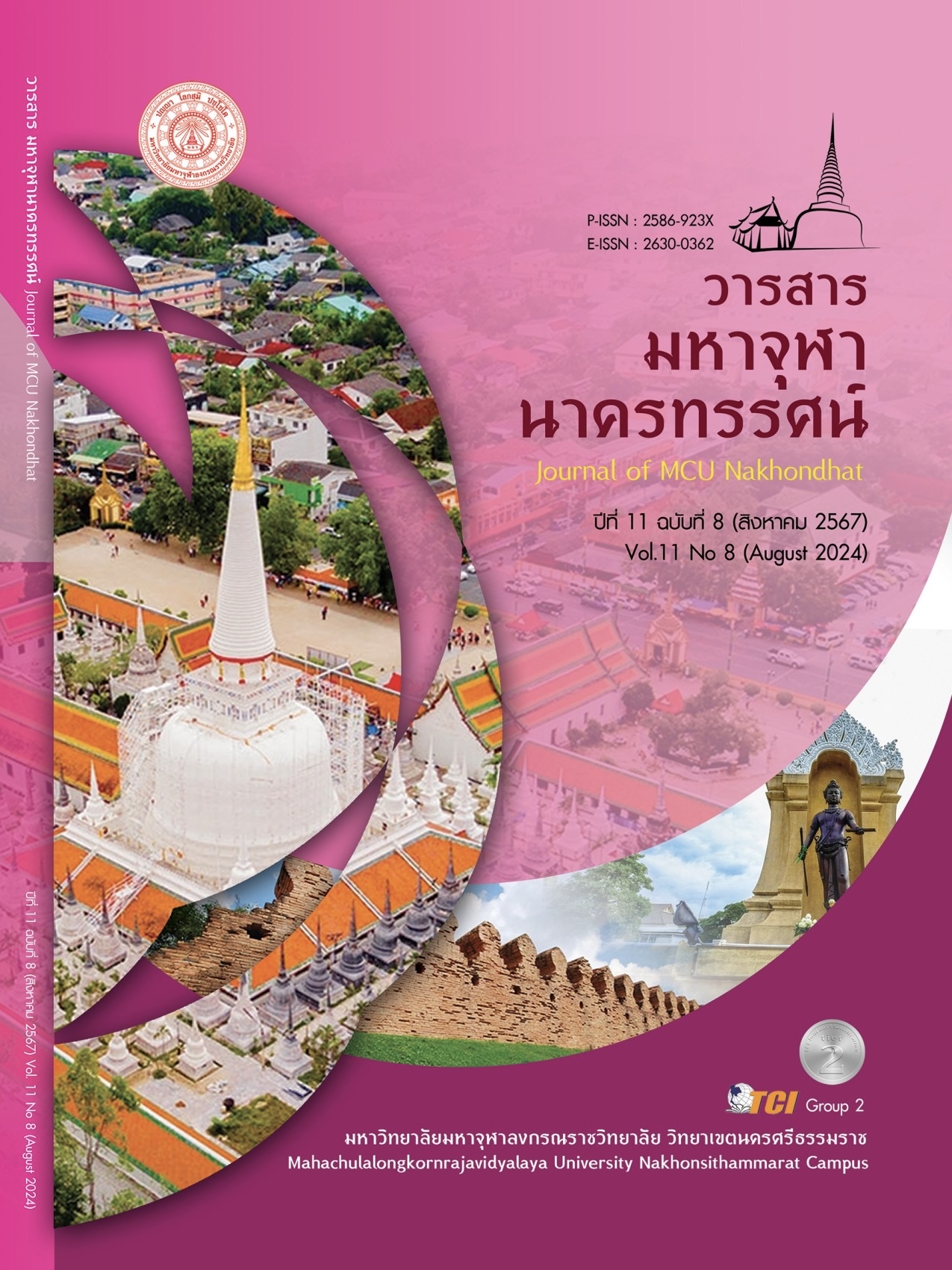IMAGE OF SHORT HAIRED WOMEN AND LEADERSHIP
Main Article Content
Abstract
The purpose of this academic article is to study the image of short hair in women and how it affects perceptions of leadership in the modern world. Fashion trends, including hairstyles, have evolved over time, influencing the image people present. Hairstyles can enhance one's appearance, similar to clothing, as reflected in the Thai proverb, "A beautiful chicken is beautiful because of its feathers, a beautiful person is beautiful because of their attire." Historically, the association between hair length and gender roles has been culturally reinforced. Traditionally, women were expected to have long hair, while men had short hair. During wartime in ancient Thailand, women would cut their hair short to resemble men, helping them avoid danger from enemies. In contrast, long hair in historical Western societies often symbolized beauty, high social status, and a comfortable lifestyle for women. The article posits that short hair in women can be perceived as a sign of increased leadership qualities. Short hair is often associated with a masculine appearance, agility, and a commanding presence. Many female leaders and high-ranking women in organizations tend to have short hair. This perception is also reinforced in some films, where female leaders or main characters often sport short hair, signifying strength and authority.
Article Details

This work is licensed under a Creative Commons Attribution-NonCommercial-NoDerivatives 4.0 International License.
References
กฤตยา อาชวนิจกุล. (2554). เพศวิถีที่กำลังเปลี่ยนแปลงไปในสังคมไทย. เรียกใช้เมื่อ 5 พฤษภาคม 2564 จาก http://www2.ipsr.mahidol.ac.th/ConferenceVII/Download/2011-Article-03.pdf
กฤษณ์ อริยะพุทธิพงศ์. (2560). การคุกคามโดยภาพเหมารวม. เรียกใช้เมื่อ 9 ตุลาคม 2563 จาก https://www.psy.chula.ac.th/th/feature-articles/stereotype-threat/
ชลิดาภรณ์ ส่งสัมพันธ์. (2551). ประวัติศาสตร์ของเพศวิถี: ประวัติศาสตร์เรื่องเพศ/เรื่องเพศใน ประวัติศาสตร์ไทย. กรุงเทพมหานคร: มูลนิธิสร้างความเข้าใจเรื่องสุขภาพผู้หญิง (สคส.).
ศวริศ ศรีฤทธิประดิษฐ์. (2560). ทำไมผู้ชายถึงไว้ผมสั้น และผู้หญิงไว้ผมยาว. เรียกใช้เมื่อ 5 พฤษภาคม 2563 จาก https://medium.com/@faaksornjournal/ทำไมผู้ชายถึงไว้ผมสั้น-และผู้หญิงไว้ผมยาว
สุรสิทธิ์ วิทยารัฐ. (2548). ภาพเหมารวมสื่อมวลชน : Media Stereotypes. เรียกใช้เมื่อ 9 กันยายน 2564 จาก https://mgronline.com/daily/detail/9480000090726
อุษา พัดเกตุ. (2551). สตรีนิยมที่ถูกรื้อสร้าง: การศึกษาการผนึกกำลังของผู้หญิงในกรงอำนาจผู้ชายใน นวนิยายเรื่อง เมียจ้าว. วารสารมนุษยศาสตร์ มหาวิทยาลัยนเรศวร, 5(2), 41-62.
เย็นจิตร ถิ่นขาม. (2553). สตรีนิยม (Feminism). เรียกใช้เมื่อ 7 พฤษภาคม 2564 จาก https://www.gotoknow.org/posts/357827.%20%E0%B9%96
ไทยรัฐ. (2554). รูสเซฟฟ์นั่งเก้าอี้ผู้นำหญิงคนแรกของบราซิล. เรียกใช้เมื่อ 5 พฤษภาคม 2564 จาก https://www.thairath.co.th/news/foreign/138241
Bellsos. (2559). Feminism คืออะไร สิ่งที่คุณเข้าใจ ถูกหรือผิด? เรียกใช้เมื่อ 10 พฤษภาคม 2564 จาก https://kullastreemag.com/lifestyle/feminism-คืออะไร/
Butler, J. (1990). Gender trouble: Feminism and the subversion of identity. New York: Routledge.
Cerina. (2021). Why short hair is still a feminist statement. Illumination. Retrieved July 25, 2024, from https://medium.com/illumination/why-short-hair-is-still-a-feminist-statement-6ad9e0d867d4
Connext Team. (2564). สุดยอด 12 ผู้นำหญิง ที่สร้างแรงบันดาลใจให้กับคนทั่วโลก. เรียกใช้เมื่อ 7 ตุลาคม 2564 จาก https://techsauce.co/connext/career-insight/12-women-leaders-who-inspire-people-around-the-world
De Beauvoir, S. (2011). The second sex. Vintage: Original work published 1949.
Dray. (2567). The psychology of short hair: What your cut says about you Stylist. เรียกใช้เมื่อ 25 กรกฎาคม 2567 จาก https://www.stylist.co.uk/beauty/short-hair-psychology/544830
Geraghty, C. (2000). Reinventing film studies: What is the study of film? Screen. Journal of Psychology, 41(1), 91-105.
Greenleaf, R. K. . (1977). Servant leadership: A journey into the nature of legitimate power and greatness. New York: Paulist Press.
Kristen Bateman. (2023). The long, long history of long, long hair. Retrieved October 7, 2023, from https://www.dazeddigital.com/beauty/article/61194/1/history-of-long-long-hair-lady-godiva-kim-kardashian-extensions-femininity
Rudolph. (2014). Historic hair: “Bobbing” and “Waving” in the 1920s. Denver Public Library. Retrieved July 25, 2023, from https://history.denverlibrary.org/news/historic-hair-bobbing-and-waving-1920s
Scott, Joan W. (1988). Gender and the Politics of History. New York: Columbia University Press.
Sherman Hollar. (2012). Dalia Grybauskaite president of Lithuania. Retrieved October 7, 2024, from https://www.britannica.com/biography/Dalia-Grybauskaite
Stogdill, R. M. (1948). Personal factors associated with leadership: A survey of the literature. Journal of Psychology, 25(1), 35-71.


